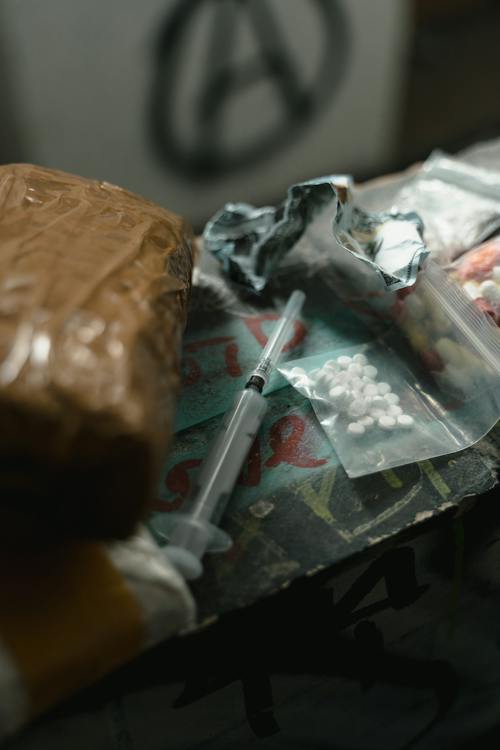
Fentanyl abuse has become a significant public health concern, with devastating consequences for individuals and communities. This article aims to provide an in-depth exploration of fentanyl abuse, its associated risks, the efforts of the National Institute on Drug Abuse (NIDA) to combat its misuse, legal and health implications, as well as treatment and prevention strategies.
What is Fentanyl and How is it Abused?
What is fentanyl and how is it different from other opioids?
Pharmaceutical fentanyl is a powerful synthetic opioid similar to morphine but is 50 to 100 times more potent than morphine, making it an effective treatment for severe cancer pain when prescribed by a doctor. It is typically used to treat severe pain, especially in cancer patients, or to manage pain after surgery. However, when fentanyl is prescribed, it must be used carefully under medical supervision. Unlike morphine, pharmaceutical fentanyl can be manufactured illicitly and is frequently linked to illegally made fentanyl analogues and mixing fentanyl instances.
How is fentanyl abused?
Fentanyl, especially fentanyl patches, are often abused by cancer pain patients seeking its potent effects in 2021. Fentanyl can be obtained illegally in various forms including powder, tablets, or even made into pills and mixed with other drugs like heroin or cocaine by drug dealers. Illicitly manufactured fentanyl is also found in counterfeit pills.
Why do people use fentanyl illegally?
People may illegally use pharmaceutical fentanyl and illicit fentanyl, which can be made into pills by drug dealers, for their powerful and rapid effects in 2021, seeking intense euphoria or pain relief. Due to its potency, similar to pharmaceutical fentanyl, less substance is required to achieve the desired effect, making it appealing to some individuals in 2021.
Understanding the Risks of Fentanyl Abuse
What are the potential risks of fentanyl overdose?
The risk of overdose is high with fentanyl abuse due to its potency. Even a small amount can lead to a lethal overdose. The effects of opioid drugs like fentanyl can rapidly suppress breathing, leading to respiratory distress and potentially fatal overdose. Symptoms include dizziness, weak pulse and loss of consciousness.
What are the dangers of using illicitly manufactured fentanyl?
Illicitly manufactured fentanyl can be particularly dangerous as the potency and composition of the drug can vary greatly, enhancing the risk of an unintentional overdose. Understanding the signs of opioid withdrawal can help prevent fatalities. Additionally, fentanyl analogues, such as carfentanil, are even more potent, presenting an extreme danger to individuals who use these substances.
What is the risk of overdose death with fentanyl abuse?
Fentanyl abuse is linked to a significant increase in drug overdose deaths. In recent years, the misuse of opioids like fentanyl, usually prescribed by a doctor for severe pain, has contributed to a concerning rise in drug overdose mortality rates, highlighting the severity of the issue.
NIDA’s Efforts and Resources in Combating Fentanyl Abuse
How is NIDA addressing the issue of fentanyl abuse?
In 2021, NIDA has been actively involved in research initiatives, funding studies to better understand the impact of mixing fentanyl and oxycodone among cancer pain patients. Through collaboration with health professionals, law enforcement agencies, and community organizations, NIDA aims to combat the growing problem of fentanyl misuse. It’s critical to share sensitive information regarding potential misuse in the community.
What are some frequently asked questions about fentanyl and its abuse?
NIDA provides valuable resources addressing commonly asked questions about fentanyl and its abuse. They offer help near you to those dealing with fentanyl misuse. In 2021, these resources, such as the gov website, offer valuable information for individuals seeking to understand the risks associated with fentanyl and oxycodone use, as well as guidance for those affected by mixing fentanyl.
What resources does NIDA offer for those struggling with fentanyl abuse?
NIDA offers a range of resources and support for individuals struggling with fentanyl abuse, including access to evidence-based treatment options, educational materials, and avenues for seeking help and support. These resources aim to assist individuals in overcoming fentanyl addiction and preventing relapse.
Legal and Health Implications of Fentanyl Abuse
What are the legal implications of manufacturing fentanyl illegally?
The illicit production and distribution of pharmaceutical fentanyl carry severe legal consequences in 2021, the same applies to illegal drug use including fentanyl. Law enforcement agencies are actively targeting illicit drug manufacturers and distributors to curb the supply of illegally made fentanyl and protect communities from its harmful effects.
How does fentanyl abuse contribute to opioid use disorders?
Fentanyl and oxycodone abuse can contribute to the development of opioid use disorders, leading to physical dependence, withdrawal symptoms, and an increased risk of overdose for cancer pain patients who misuse their fentanyl patches. Long-term misuse of prescription opioids like fentanyl and oxycodone can have detrimental effects on an individual’s physical and mental well-being, necessitating comprehensive treatment and support.
What health risks are associated with using fentanyl for non-medical purposes?
Using prescription opioids like fentanyl and oxycodone for non-medical purposes poses significant health risks in 2021, including the potential for overdose, respiratory depression, and long-term consequences on overall health. In 2021, it is crucial for individuals to be aware of the dangers of misusing fentanyl patches and illicit fentanyl and seek help near them when needed.
Treatment and Prevention of Fentanyl Abuse
What are the available treatment options for fentanyl addiction?
Treatment options for fentanyl addiction may include medication-assisted therapy, counseling, and support programs tailored to address the unique challenges associated with opioid misuse. Access to comprehensive care is essential to assist individuals in overcoming addiction to fentanyl and other prescription opioids and rebuilding their lives.
How can the risk of fentanyl overdose be reduced by using naloxone?
Naloxone, a medication that can rapidly reverse the effects of opioid overdose, is an invaluable tool in preventing fatal outcomes due to fentanyl misuse. Training individuals on the use of naloxone and expanding its availability in communities is a crucial strategy in reducing the risk of overdose deaths.
What preventive measures can be taken to address fentanyl abuse in communities?
Preventive measures to address fentanyl abuse in communities may involve education and awareness campaigns, access to substance abuse treatment, and support services, as well as initiatives to combat the illicit distribution of fentanyl. Community involvement and collaboration are essential in addressing the multifaceted challenges posed by fentanyl misuse.
Q: What is fentanyl?
A: Fentanyl is a synthetic opioid that is prescribed for pain relief, especially for cancer patients. In 2021, pharmaceutical fentanyl is also illegally made and sold on the drug market, together with illicit fentanyl.
Q: How potent is fentanyl compared to morphine?
A: Fentanyl is about 100 times stronger and more potent than morphine.
Q: What are the legal forms of fentanyl?
A: Fentanyl is available in several legal forms, including lozenges, patches, and nasal sprays for prescription use.
Q: What are the risks of illegally made fentanyl?
A: Illegally made fentanyl, often found in drug markets, poses significant risks due to its potency and potential to cause overdose and death.
Q: How does fentanyl affect the body?
A: Fentanyl acts as an analgesic, providing pain relief and sedation, which can lead to substance use disorders and overdose if misused.
Q: Where can I find help for fentanyl abuse?
A: You can find help for fentanyl abuse through resources provided by the national center and secure websites, as well as seeking assistance from healthcare professionals and support groups.
Q: What is the role of the drug enforcement in addressing illegal fentanyl?
A: The drug enforcement agency plays a crucial role in addressing the illegal distribution and trafficking of fentanyl to reduce its impact on public health and safety.
Q: Can fentanyl be mixed with other drugs?
A: Yes, fentanyl, often prescribed by a doctor for pain relief, is frequently mixed with other substances such as xylazine and opioids, increasing the risk of overdose and adverse effects.
Q: How long does fentanyl stay in the body?
A: Fentanyl can stay in the body for several hours after the last dose, contributing to its potential for prolonged effects and risks. Withdrawal symptoms usually start within a few hours of the last dose.
Q: Why is fentanyl attractive in drug markets?
A: Fentanyl, as well as its illegal drug version, illicit fentanyl, is attractive in drug markets for its heroin-like effects and potency in 2021, making it sought after by individuals seeking intense euphoria and high potency in their drug use.










